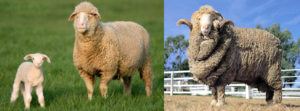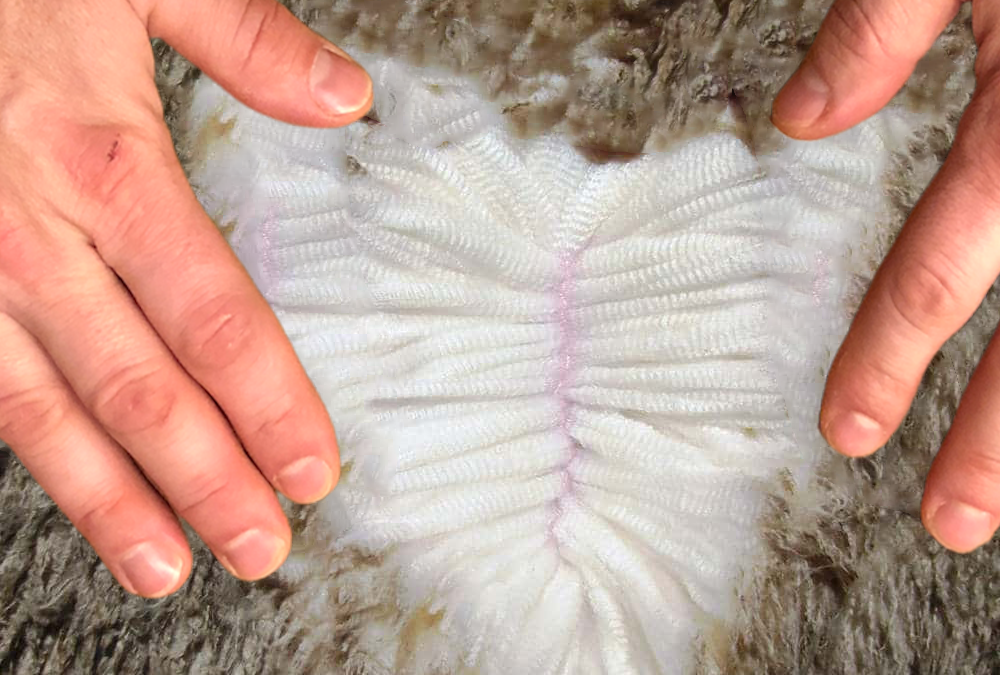Babylonia was the first country to process and trade in wool (Babilonia = land of wool) and also the proof of using leather of different skin in clothes and shoes by discovery of the oldest European mummy – Ötzi the iceman – man who lived about 5300 years ago on the border between Austria and Italy.

“Sheep evolution and living in environments of extreme weather conditions, the sheep wool has been engineered by the nature to protect the sheep throughout these conditions – giving it whole range of functionalities. So far, there is no other material available which would offer such a versatile performance without additional support of human kind.”
“The main pillars are structure, performance and its ecological benefits and its constant evolution over millions of years.”
Therefore, wool fibre is prerequisite to be a brilliant high-tech fibre for sport, active and at the same time urban wear. It is a versatile all-rounder.
“The Wool has proven for centuries to be successful natural high-tech fibre.”
What is Wool?
Is an ancient fibre typically from sheep which grows the same way people grow hair. So, it is renewable. It may come from several others including alpaca, yak, angora, Ilama, and goats (cashmere and mohair). Even more about it can be found here.
This biological fibre challenges scientists who want to replicate it. They remain unsuccessful.
Sustainable manufacturing of textiles but also raw materials is a key challenge to tackle environmental issues. Here we are, wool is a product of sun, rain, air, and grass. It is one of the best high-tech performing, versatile and ecological fibres. Unfortunately it represents only 1% of the global market.
Many of us consider that wool clothes pieces are itchy and scratchy. Yes, because in past mostly coarse wool, not very fine to provide soft touch, has been used. Nowadays, specially breaded merino sheep, which travelled from Spain to Australia and New Zealand, South American or China, provides fine and extremely soft touch like silk or rather satin touch.
Recently University of Leeds experts have taken part in a short documentary film produced with His Royal Highness The Prince of Wales for the Campaign for Wool.
Why wool matters stated clearly His Royal Highness The Prince of Wales (in meantime King Charles III), Patron Campaign for Wool “It is abundantly clear to me that we need to make changes to the way we think about the production, use and the disposal of clothing and textiles if we are going to get anywhere near to meeting the United Nations climate change goals set for the industry. A major part of that change has to be moving from a linear system to a circular one, where textiles and clothing are produced sustainably, enjoy long use, and are made using natural materials, specifically wool, which will biodegrade naturally and quickly at the end of their useful life”.
Did you know that most of the wool in Europe is thrown away or even burned down?
Although sheep is an all-rounder of being profitable, but nowadays, earnings are coming mainly from meat sale, little bit sale of milk, and almost nothing from sale of wool fur or fleece. As Prof. Dr. Pflanz summarized: ”In the 1950s, you could get the equivalent of € 3 for a kg of wool. It used to be the main source of income. Now, the shepherd gets an average of 90 cents per kg. A sheep produces around 3-4 kg of wool per year, so the shepherd may not even be able to cover the cost of shearing, or only just. Fortunately Prof. Dr. Pflanz sees a bright future for European Wool, but he did not forget to state that there is a need to increase a recognition about to save this valuable raw material from wasting.

